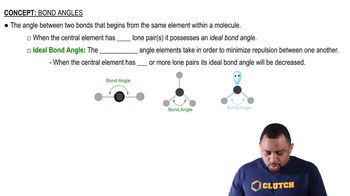Here are the essential concepts you must grasp in order to answer the question correctly.
π Bonds
π bonds are a type of covalent bond formed when two lobes of one involved atomic orbital overlap with two lobes of another, typically occurring in double and triple bonds. They arise from the side-to-side overlap of p orbitals, allowing for the sharing of electrons between atoms. Carbon, nitrogen, and oxygen can form π bonds due to their ability to engage in hybridization and have available p orbitals.
Recommended video:
Hybridization
Hybridization is the concept of mixing atomic orbitals to create new hybrid orbitals that can form bonds with other atoms. For example, carbon can undergo sp² or sp³ hybridization, allowing it to form multiple bonds, including π bonds. Nitrogen and oxygen also participate in hybridization, enabling them to form stable π bonds in their molecular structures.
Recommended video:
Fluorine's Electron Configuration
Fluorine has an electron configuration of 1s² 2s² 2p⁵, which means it has only one unpaired electron in its 2p orbital. This configuration limits its ability to form π bonds, as it prefers to form single bonds through σ bonding by sharing its unpaired electron. Additionally, fluorine's high electronegativity and small size make it less likely to engage in the types of bonding that involve π interactions.
Recommended video:
Electron Configuration Example
 Verified step by step guidance
Verified step by step guidance

